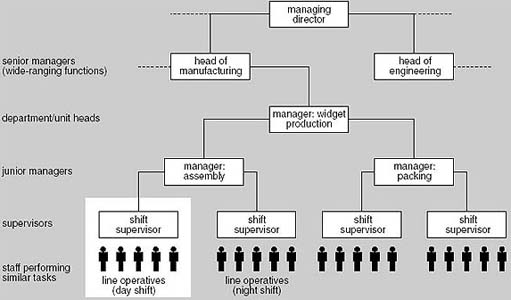2.3 Types of teams
Different organisations or organisational settings lead to different types of team. The type of team affects how that team is managed, what the communication needs of the team are and, where appropriate, what aspects of the project the project manager needs to emphasise. A work group or team may be permanent, forming part of the organisation's structure, such as a top management team, or temporary, such as a task force assembled to see through a particular project. Members may work as a group continuously or meet only intermittently. The more direct contact and communication team members have with each other, the more likely they are to function well as a team. When a group as a whole functions well, then not only do the individual members of the group function well, but they also tend to gain a sense of satisfaction from being part of the group. Thus getting a group to function well is a much prized management aim.
Below, I discuss some common types of team. Many teams may not fall clearly into one type, but may combine elements of different types.
Many organisations have traditionally been managed through a hierarchical structure. This general structure is illustrated in Figure 1, and consists of:
staff performing similar tasks – grouped together reporting to a single supervisor;
junior managers – responsible for a number of supervisors and their groups;
groups of junior managers – reporting to departmental heads;
departmental heads – reporting to senior managers, who are responsible for wide-ranging functions such as manufacturing, finance, human resources and marketing;
senior managers – reporting to the managing director, who may then report to the Board.
The number of levels clearly depends upon the size and to some extent on the type of the organisation. Typically, the 'span of control' (the number of people each manager or supervisor is directly responsible for) averages about five people, but this can vary widely.

While the hierarchy is designed to provide a stable 'backbone' to the organisation, projects are primarily concerned with change, and so tend to be organised quite differently. Their structure needs to be more fluid than that of conventional management structures. There are four commonly accepted types of project team: the functional team, the project (single) team, the matrix team and the contract team.
